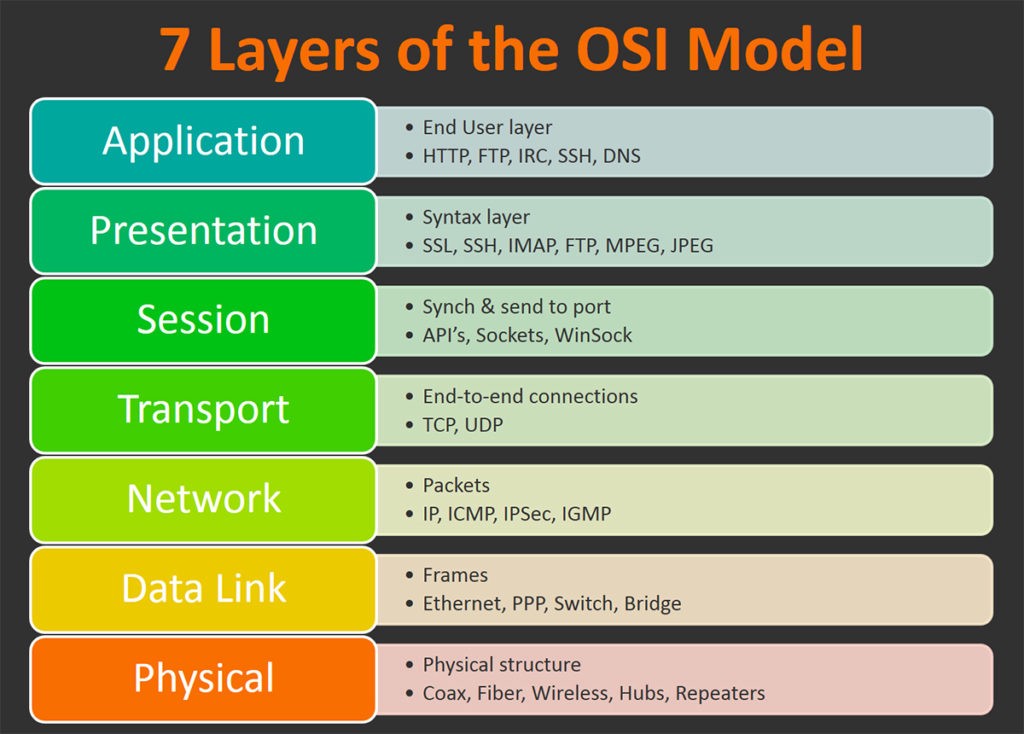Today I will tell you what is OSI model is and OSI Layers And Their Functions. And in what way is this model no juice made. Today I will tell you about the OSI model as well as the parts along with it. The OSI model is very much used today in the Internet world and almost every user uses it.
The full form of the OSI model is Open System Interconnection. The OSI model was introduced in 1976. The Vasai model was developed by ISO (International Standard Organization) and the OSI model was implemented in 1986. The OSI model cannot be called an implementation because we always use this model in the same way as rape. We did not implement it practically because we have implemented TCP IP practically.

Now I will tell you how the OSI model works. There are 7 layers inside the OSI model. In all its layers, it is a very asked question that which is the first layer of the OSI model.
If you do not know about the first layer of the OSI model, then you have to remember that these things depend on whether you are on the sender side or the receiver side. If you are a sender, then the first layer for you will be considered as the application layer. And if you are on the receiver side then the first layer for you will be considered as the physical layer.
More Android Applications On Windows.
- Instagram Download For PC.
- WhatsApp Download In 2021.
- Download Telegram In Windows.
- Zoom App Download For Windows 10.
7 OSI Layers And Their Functions
- Physical Layer
- Data Link Layer
- Network Layer
- Transport Layer
- Session Layer
- Presentation Layer
- Application Layer
1. Physical Layer – OSI Layer
The lowest layer of the OSI Model is about electronically transmitting or explicitly sending raw pieces of data across the network from the physical layer of the sending device to the physical device of the receiving device. It can include details such as voltages, pin formation, cable, and radio frequencies. For physical links, one can access “physical” resources such as network locations, table sets, repetitions, network adapters, or modems.
2. Data Link Layer – OSI Layer
In the data link layer, directly connected environments are used to perform node-to-node data transfers where data is integrated independently. The data link layer also fixes errors that may appear in the physical layer.
The data link layer covers the two layers below it. First, media access control (MAC), provides control over the flow and duplication of device transmission over the network. Second, logical link control (LLC), provides centralized flow and error control and identifies line processes.
3. Network Layer
The network layer is responsible for receiving frames from the data link layer and sending them to the intended locations between them based on the addresses contained within the framework. The network layer finds its destination using logical addresses, such as IP (Internet protocol). In this layer, routers are an important component used for virtual route information where it needs to travel between networks.
4. Transport Layer
The transport layer controls delivery and error-checking data packets. It controls the size, sequence, and ultimately the data transfer between systems and hosts. One of the most common examples of the transport layer is TCP or Transmission Control Protocol.
5. Session Layer
The session layer controls conversations between different computers. Session or inter-machine communication is set up, managed, and disconnected from layer 5. The services of the session layer include authentication and reconnection.
6. Presentation Layer
The presentation layer creates or translates the application layer data according to the syntax or semantics adopted by the application. Because of this, it is sometimes called the syntax layer. This layer can manage the encryption and decryption required by the application layer.
7. Application layer
In this layer, both end-users and the application layer interact directly with the software application. This layer detects network services provided to end-users such as web browsers or Office 365. The layer identifies network partners, resource availability, and synchronizes communication.


